3,000-Year-Old History Of Tea: World’s Second Most-Consumed Drink After Clean Water
A. Sutherland - AncientPages.com - According to the opinion of the majority of experts on the subject, the homeland of tea is China.
![A painting of ancient Chinese playing a competitive game based on tea drinking in the Song Dynasty (960-1279). [Photo/people.cn]](https://www.ancientpages.com/wp-content/uploads/2019/04/teachinatradition1.jpg) A painting of ancient Chinese playing a competitive game based on tea drinking in the Song Dynasty (960-1279). Image credit: people.cn
A painting of ancient Chinese playing a competitive game based on tea drinking in the Song Dynasty (960-1279). Image credit: people.cn
Already three thousand years ago, and perhaps much earlier, the local population used tea leaves to prepare a medicament to alleviate stomach problems and increase concentration.
The habit of drinking tea for pleasure has been developing very slowly over many centuries.
According to legend, it all started in China around 2737 BC. One day, the Chinese emperor – Shennong (Shen Nung), an herbalist and scholar who usually drank only boiled water, rested under a wild tea tree.
Suddenly, a rush of wind caused several leaves to fall from the tree into his pitcher with water. Later, after taking the drink into his mouth, he felt an entirely new taste that surprised and charmed him.
Iranians usually drink tea with rock candy and in glass cups. Image credit: Persian Food Tours - CC BY-SA 4.0 DEED
The Chinese kept their secret for a long time. The first written mention of this plant dates back to the third century BC, and for many years, tea, made from the leaves of wild tea trees, was used only as a medicine and strengthening agent.
Hot tea promoters were Buddhist monks who discovered that tea helped them much during long hours of meditation. By the second century BC, Buddhist monks had found tea' to have stimulating properties and contributed to its cultivation and development.
During the Tang Dynasty (618-907), monks from Korea and Japan started to visit Buddhist monasteries in China more and more often. Returning to their homelands after many years of study, the monks took with them seeds of plants to undertake the first attempts to grow a tea bush in the secluded gardens.
They also introduced the custom of drinking tea to the religious ceremony. In the twelfth century, in Japan, there was a ritual in honor of the Buddha and the legendary founder of the Zen sect, Bodhidharma, known in Japan as Daruma.
Azerbaijani tea culture. Image credit: Investigation11111 - CC BY-SA 4.0 DEED
A few centuries later, tea became a popular and widely available drink. The art of preparing and drinking tea became a popular ritual, and teahouses began to appear.
In the mid-8th century, tea drinking became widely popular during the Tang Dynasty, and around 803 AD, monk Dengyo Daishi took the first seeds of a tea plant to Japan.
Soon, the reputation of this prestigious beverage drink spread to Korea, Japan, Vietnam, and Tibet. Through the centuries, various techniques for drying and processing tea and several different forms of tea were developed.
Europeans had already heard about tea from missionaries returning from the Far East. However, the Dutch were the first to bring it to Europe. The Dutch company East India Co. imported the prestigious tea beverage from China to Europe in 1609.
The ceremony of drinking tea as a new exotic drink spread in England, where it came to Thomas Garraway, a merchant and a shop owner in London). Initially, the privilege of consuming this exotic drink was only limited to very wealthy people - the royal family and aristocracy.
A few decades later, a marvelous tea beverage reached the rest of Europe, and elegant, beautifully decorated accessories and the opening of tearooms appeared across the continent.
At the same time, tea by land was brought to Russia as a gift from the Emperor of China for Tsar Nicholas Romanov.
Image credit: Samovary.ru
The Russian 'Samovar '("samovar" is "self-boiling") is the Russian tea machine, considered to be much better than other water-heating devices. In early times, the samovar was used not only for boiling water but also for boiling soup and 'sbiten' (hot honey & spice hot winter beverage. )
Soon, it appeared not only among the magnates; at the end of the 18th century, despite the still relatively high price, tea began to welcome guests at the tables of less affluent people.
Camel caravans packed with boxes filled with tea roamed the mountain regions, deserts, and steppes of Central Asia, southern Siberia, and Russia until the early twentieth century. Then, the situation changed for tea transport when the Trans-Siberian Railway was completed, and trade between China and Russia was revolutionized.
Written by – A. Sutherland - AncientPages.com Senior Staff Writer
Updated on Nov 18, 2023
Copyright © AncientPages.com All rights reserved. This material may not be published, broadcast, rewritten or redistributed in whole or part without the express written permission of AncientPages.com
More From Ancient Pages
-
 Three Punic Wars Between Rome And Carthage Lasted Almost A Hundred Years
Featured Stories | Apr 29, 2019
Three Punic Wars Between Rome And Carthage Lasted Almost A Hundred Years
Featured Stories | Apr 29, 2019 -
 Evidence Of The Biggest Ever Solar Storm 14,300 Years Ago – Found In Ancient Tree Rings
Earth Changes | Oct 9, 2023
Evidence Of The Biggest Ever Solar Storm 14,300 Years Ago – Found In Ancient Tree Rings
Earth Changes | Oct 9, 2023 -
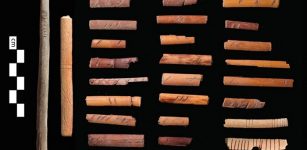 America’s First Casino Was Created By The Promontory Culture 700 Years Ago
Ancient History Facts | Apr 30, 2016
America’s First Casino Was Created By The Promontory Culture 700 Years Ago
Ancient History Facts | Apr 30, 2016 -
 Why Did Ancient Egyptians Fear The Vizier?
Ancient History Facts | May 24, 2018
Why Did Ancient Egyptians Fear The Vizier?
Ancient History Facts | May 24, 2018 -
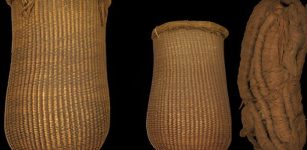 9,500-Year-Old Baskets And 6,200-Year-Old Sandals Found In Spanish Cave
Archaeology | Sep 28, 2023
9,500-Year-Old Baskets And 6,200-Year-Old Sandals Found In Spanish Cave
Archaeology | Sep 28, 2023 -
 Saqqara Necropolis: Biggest Archaeological Discovery In 2020 – Photos Revealed
Archaeology | Nov 14, 2020
Saqqara Necropolis: Biggest Archaeological Discovery In 2020 – Photos Revealed
Archaeology | Nov 14, 2020 -
 On This Day In History: Knights Templars’ Jacques de Molay Burned At The Stake – On Mar 18, 1314
News | Mar 18, 2017
On This Day In History: Knights Templars’ Jacques de Molay Burned At The Stake – On Mar 18, 1314
News | Mar 18, 2017 -
 Citrus Was An Ancient Roman Symbol Of Status And Luxury
Ancient Symbols | Aug 23, 2017
Citrus Was An Ancient Roman Symbol Of Status And Luxury
Ancient Symbols | Aug 23, 2017 -
 On This Day In History: Ceiling Of The Sistine Chapel, Painted By Michelangelo, Is Shown Publicly For The First Time – On Nov 1, 1512
News | Nov 1, 2016
On This Day In History: Ceiling Of The Sistine Chapel, Painted By Michelangelo, Is Shown Publicly For The First Time – On Nov 1, 1512
News | Nov 1, 2016 -
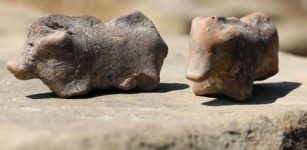 Unique 3,500-Year-Old Clay Pig Figurines Used As Children’s Toys Found In Poland
Archaeology | Aug 19, 2020
Unique 3,500-Year-Old Clay Pig Figurines Used As Children’s Toys Found In Poland
Archaeology | Aug 19, 2020 -
 Did An Ancient Supernova Force Humans To Walk Upright?
Human Beginnings | Oct 24, 2019
Did An Ancient Supernova Force Humans To Walk Upright?
Human Beginnings | Oct 24, 2019 -
 DNA Study Sheds New Light On The Mysterious 9,000-Year-Old Shaman Burial In Bad Dürrenberg
Archaeology | Nov 29, 2023
DNA Study Sheds New Light On The Mysterious 9,000-Year-Old Shaman Burial In Bad Dürrenberg
Archaeology | Nov 29, 2023 -
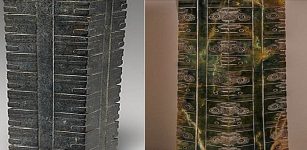 Mysterious Jade Cong – Perplexing Ancient Chinese Artifact
Featured Stories | Jan 3, 2023
Mysterious Jade Cong – Perplexing Ancient Chinese Artifact
Featured Stories | Jan 3, 2023 -
 The Mystery Of Ancient Ever-Burning Lamps
Ancient Technology | Sep 10, 2024
The Mystery Of Ancient Ever-Burning Lamps
Ancient Technology | Sep 10, 2024 -
 Hundreds Of Fascinating 24,000-Year-Old Cave Paintings Discovered In Eastern Iberia
Archaeology | Sep 11, 2023
Hundreds Of Fascinating 24,000-Year-Old Cave Paintings Discovered In Eastern Iberia
Archaeology | Sep 11, 2023 -
 Evidence People Lived In Australian Desert 50,000 Years Earlier Than Previously Thought
Archaeology | Sep 22, 2018
Evidence People Lived In Australian Desert 50,000 Years Earlier Than Previously Thought
Archaeology | Sep 22, 2018 -
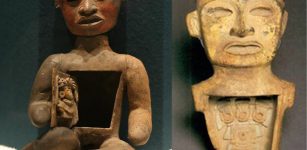 Mysterious Teotihuacan ‘Host’ Figurines From Metepec, Mexico
Artifacts | Jan 6, 2016
Mysterious Teotihuacan ‘Host’ Figurines From Metepec, Mexico
Artifacts | Jan 6, 2016 -
 Ancient Human Traces Found In The Inhospitable Namib Desert
Human Beginnings | Oct 21, 2024
Ancient Human Traces Found In The Inhospitable Namib Desert
Human Beginnings | Oct 21, 2024 -
 Paleolithic Cave Dwellers And Light They Could Get In Darkness
Archaeology | Jun 21, 2021
Paleolithic Cave Dwellers And Light They Could Get In Darkness
Archaeology | Jun 21, 2021 -
 Mystery Of Gilmerton Cove: Underground Maze Of Caves, Passages And Tunnels
Featured Stories | Dec 22, 2015
Mystery Of Gilmerton Cove: Underground Maze Of Caves, Passages And Tunnels
Featured Stories | Dec 22, 2015



